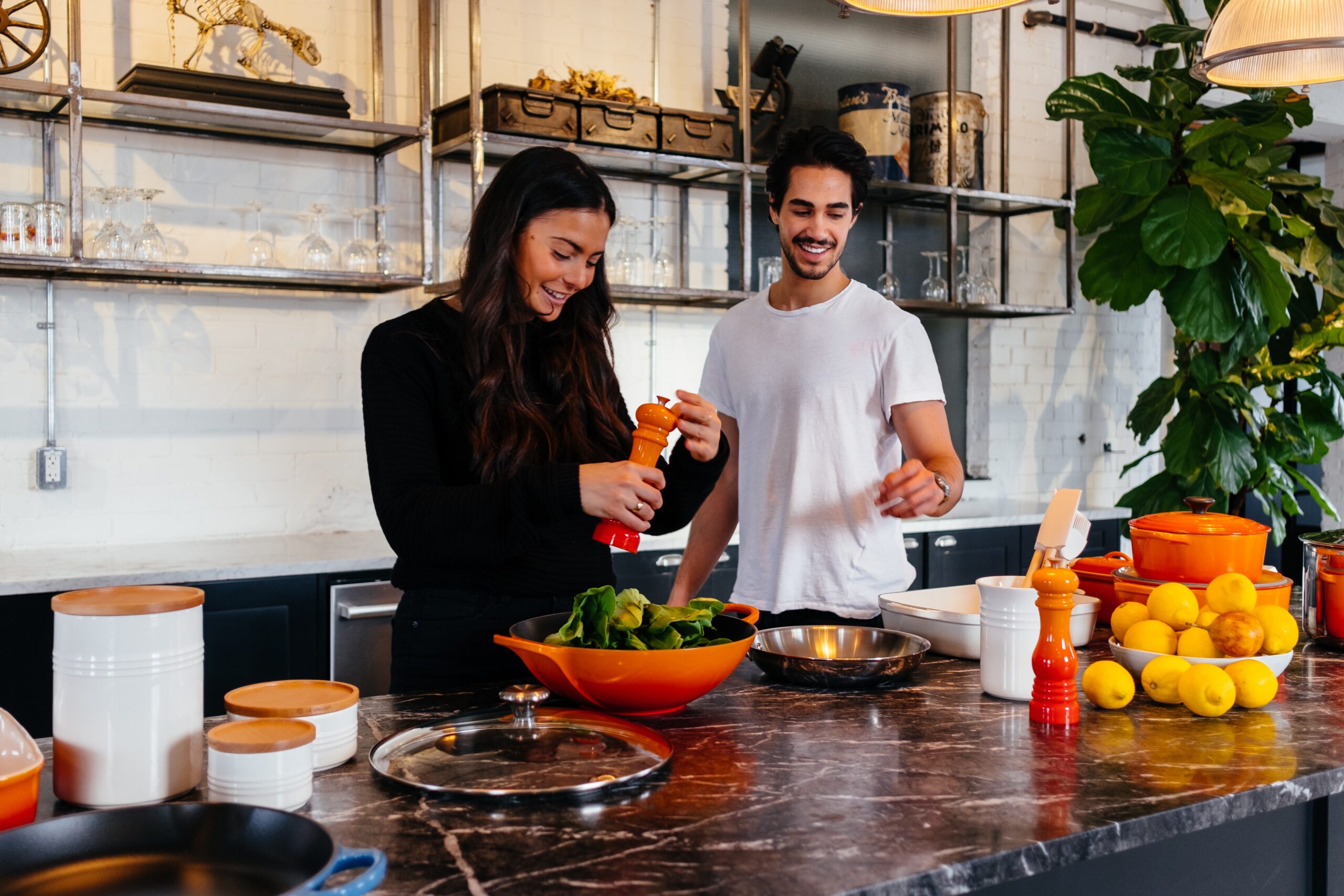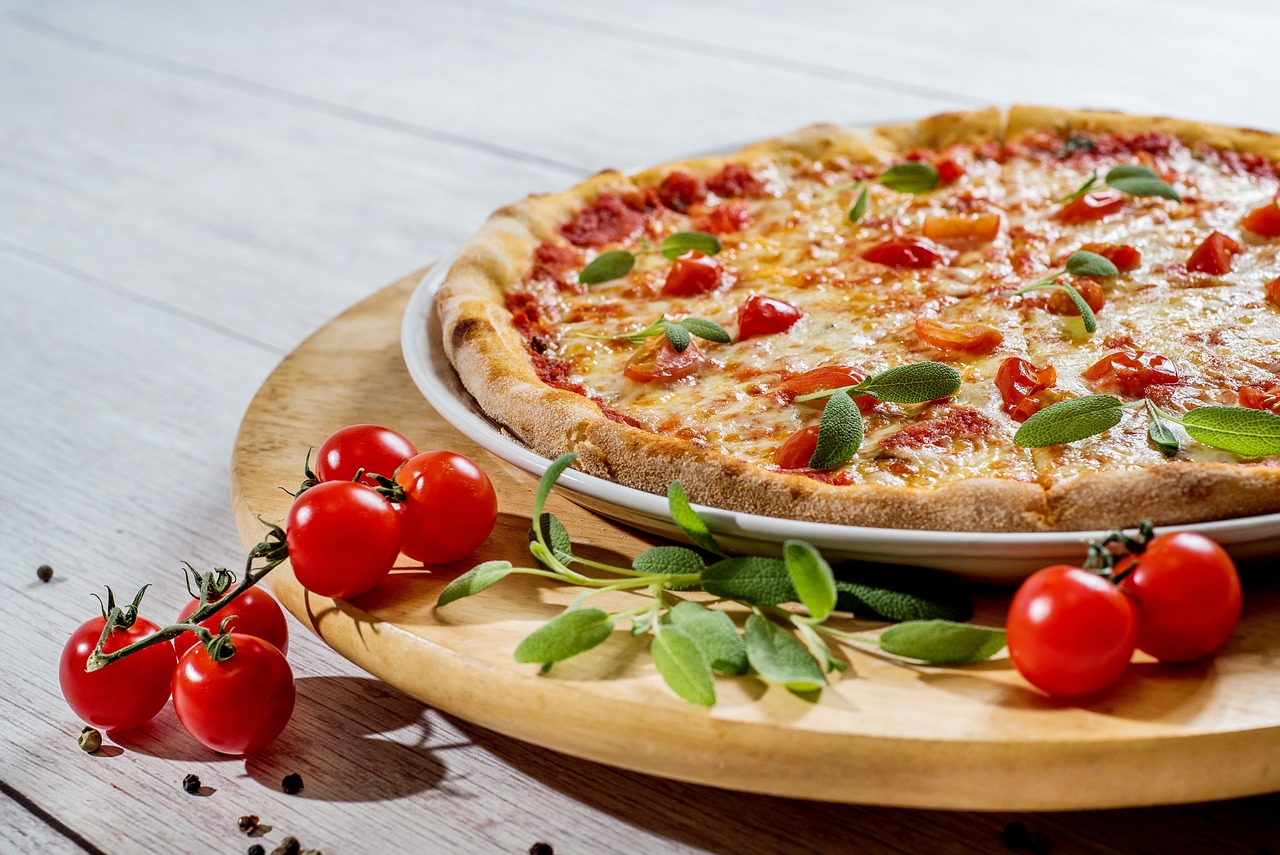Are you a passionate home cook looking to take your culinary skills to the next level? Look no further! In this article, you will discover five essential culinary tips that will elevate your cooking game and impress your family and friends. From mastering the art of seasoning to learning the importance of mise en place, these tips are bound to enhance your skills in the kitchen and make every dish you prepare a true masterpiece. So put on your apron, sharpen your knives, and let’s get cooking!

Table of Contents
1. Master Basic Knife Skills
1.1 Hold the knife correctly
One of the first skills any aspiring home cook should master is holding a knife correctly. Proper knife grip not only ensures safety but also allows for better control and precision while cutting. To hold the knife correctly, start by gripping the handle firmly with your dominant hand. Wrap your fingers around the handle, making sure your thumb rests on one side of the blade for stability. Your other hand should be used to guide and hold the ingredient you’re cutting. Practice this technique until it becomes second nature.
1.2 Practice different cutting techniques
Once you’ve mastered the proper knife grip, it’s time to expand your repertoire of cutting techniques. Different ingredients require different types of cuts, and knowing when to use each technique is essential for achieving the desired results in your dishes. Some common cutting techniques include chopping, dicing, mincing, julienning, and slicing. Practice these techniques by experimenting with various ingredients. Not only will this improve your knife skills, but it will also help you become more efficient in the kitchen.
1.3 Sharpen your knives regularly
A dull knife is not only frustrating to work with but also poses a higher risk of accidents. To ensure your knives are always sharp and ready for use, it’s crucial to sharpen them regularly. Invest in a good-quality knife sharpener or consider taking your knives to a professional for sharpening. Additionally, learn the proper technique for honing your knives using a honing steel. Regular maintenance will keep your knives in optimal condition and make your kitchen tasks much more enjoyable.
2. Understand Flavor Profiles
2.1 Experiment with herbs and spices
Herbs and spices are the secret to elevating the flavors of your dishes. Each herb and spice has its own unique flavor profile and can completely transform a dish when used correctly. Don’t be afraid to experiment with different combinations to create your own signature flavor. Start by incorporating herbs like basil, thyme, and rosemary into your cooking. Experiment with spices such as cumin, paprika, and turmeric to add depth and complexity. As you become more familiar with different flavors, you’ll develop a better understanding of what works well together.
2.2 Use the right amount of salt
Salt is a fundamental ingredient in cooking, enhancing flavors and bringing out the best in your dishes. However, it’s essential to use the right amount of salt to avoid overpowering or underwhelming your taste buds. Start by using a small amount of salt and gradually add more as needed. Remember, you can always add more salt, but it’s difficult to fix an overly salty dish. Taste as you go and adjust accordingly. Experiment with different types of salt, such as sea salt or kosher salt, to find the one that suits your palate.
2.3 Balance the flavors in your dishes
Creating well-balanced flavors is key to achieving delicious meals. It’s important to consider the different taste elements in your dishes, including sweetness, acidity, bitterness, and umami. Experiment with ingredients that offer contrasting flavors to achieve a balanced dish. For example, if a dish is too sweet, adding a touch of acid, like lemon juice or vinegar, can help balance it out. Similarly, if a dish is too acidic, a pinch of sugar can help mellow the acidity. Finding the right balance may take some trial and error, but with practice, you’ll develop a knack for creating harmonious flavors.
3. Learn Proper Cooking Techniques
3.1 Use the right cooking method for each ingredient
Knowing which cooking method to use for different ingredients is crucial in achieving optimal results. Some cooking methods include frying, baking, grilling, roasting, boiling, and steaming. For example, delicate fish may be best suited for gentle poaching, while a tougher cut of meat might require slow roasting to become tender. Research the appropriate cooking methods for the ingredients you’re working with and follow recipes closely until you feel comfortable experimenting on your own. Proper cooking techniques will help you unleash the full potential of your ingredients.
3.2 Understand cooking times and temperatures
Cooking times and temperatures can make or break a dish. Understanding the optimal cooking times and temperatures for different ingredients is essential to avoid undercooking or overcooking. Invest in a reliable meat thermometer to accurately gauge the internal temperature of meats and ensure they are cooked to the desired doneness. Additionally, learn how to read visual cues such as color, texture, and consistency to determine the doneness of other ingredients. Practice and experience will help you develop an intuition for cooking times and temperatures.
3.3 Use the correct kitchen tools and equipment
Having the right kitchen tools and equipment can make a world of difference in your cooking endeavors. From a sturdy chef’s knife to a reliable nonstick frying pan, investing in quality tools will contribute to your success in the kitchen. Equip your kitchen with essentials such as pots, pans, baking sheets, mixing bowls, and measuring utensils. Additionally, consider investing in specialty tools that align with your cooking preferences, such as a spiralizer for creating vegetable noodles or a mandoline slicer for precise cuts. Using the correct tools will not only make your cooking tasks easier but also yield better results.
4. Practice Time Management
4.1 Plan your meals in advance
Effective meal planning can significantly enhance your cooking experience. Take some time each week to plan your meals, considering the ingredients you already have on hand and what you need to purchase. This will help you avoid unnecessary trips to the grocery store and reduce food waste. Look for recipes that share common ingredients to make the most out of your purchases. Additionally, consider meal prepping by pre-cutting vegetables or marinating proteins in advance to save time during busy weekdays.
4.2 Organize your workspace
A well-organized workspace is key to efficient and enjoyable cooking. Before you start cooking, make sure your countertops are clean and cleared of any unnecessary clutter. Gather all the necessary ingredients and tools in one place for easy access. Have separate cutting boards and utensils for different types of ingredients to avoid cross-contamination. Keeping your workspace organized will help streamline your cooking process and prevent any unnecessary stress or mishaps.
4.3 Multitask efficiently
Time management in the kitchen is all about multitasking efficiently. Once you have everything prepped and ready to go, look for opportunities to consolidate tasks. For example, while your vegetables are sautéing, use that time to measure out spices for your main dish. While something is simmering on the stovetop, utilize the downtime to clean up any used utensils or prep for the next step. Efficiently multitasking will help you stay on top of your cooking and make the most of your time in the kitchen.

5. Explore Different Cuisines
5.1 Try new recipes from various cultures
Exploring different cuisines opens up a world of flavors and culinary techniques. Don’t be afraid to step out of your comfort zone and try recipes from various cultures. Experiment with Asian stir-fries, Italian pastas, Mexican tacos, Indian curries, and more. By immersing yourself in different culinary traditions, you’ll broaden your palate and discover exciting new flavors. Try incorporating a new recipe into your weekly meal plan to gradually introduce yourself to different cuisines.
5.2 Experiment with unique ingredients
As you delve into different cuisines, you’ll likely come across unique ingredients that you may not be familiar with. Embrace the opportunity to experiment with these ingredients and discover new flavors. Whether it’s using exotic spices like saffron or incorporating unusual vegetables like celeriac or jackfruit, exploring unique ingredients can introduce a new dimension to your cooking. Many specialty grocery stores and online retailers offer a wide variety of unique ingredients, making it easier than ever to embark on a culinary adventure.
5.3 Learn about different cooking techniques
Different cultures often have their own distinct cooking techniques that contribute to their unique cuisines. Take the time to learn about these techniques and incorporate them into your cooking. For example, French cuisine is known for its delicate sauces and precise knife skills, while Chinese cuisine emphasizes the art of stir-frying and balancing flavors. By understanding and mastering these techniques, you’ll expand your culinary knowledge and be able to recreate authentic flavors at home.
6. Utilize Leftovers Creatively
6.1 Repurpose leftovers into new meals
Leftovers should never go to waste! Get creative in the kitchen by repurposing leftover ingredients into new and exciting meals. Yesterday’s roasted chicken can become today’s chicken salad, or leftover vegetables can be transformed into a hearty frittata. The key is to think beyond reheating and reimagine the ingredients in a fresh way. Rely on your culinary intuition and experiment with flavors and textures to create unique dishes from your leftovers.
6.2 Freeze excess ingredients for future use
If you find yourself with excess ingredients that you’re unable to use immediately, don’t let them go to waste. Utilize your freezer as a valuable tool for preserving ingredients for future use. For example, you can freeze ripe bananas to use in smoothies or homemade banana bread. You can also freeze herbs in olive oil, making them easily accessible for future recipes. Taking advantage of your freezer will not only reduce food waste but also provide you with convenient ingredients for future cooking endeavors.
6.3 Incorporate leftovers into salads or sandwiches
Salads and sandwiches are versatile dishes that can easily accommodate leftover ingredients. Whether it’s adding leftover grilled chicken into a salad or using last night’s roast beef in a sandwich, these dishes offer a fresh perspective on your leftovers. Experiment with different flavor combinations and dressings to elevate your salads or sandwiches. Leftovers can be transformed into delicious, satisfying meals with just a little creativity and some simple additions.

7. Season and Taste as You Go
7.1 Adjust seasoning throughout the cooking process
Seasoning your dishes is not a one-time task; it’s an ongoing process. As you cook, it’s important to taste your dishes and adjust the seasoning as needed. Start by adding small amounts of salt, pepper, and other spices, and gradually build the flavors. Don’t hesitate to add more seasoning if you find your dish lacking in flavor. Remember, it’s easier to add seasoning than to remove it. By continuously tasting and adjusting, you’ll develop a keen sense of how different flavors interact and how to achieve the perfect balance.
7.2 Taste your dishes before serving
Before serving your dishes, always take a moment to taste them. This final taste test allows you to make any last-minute adjustments and ensures that your dish is absolutely delicious. Pay attention to the overall flavor profile, texture, and seasoning. If you find that something is missing, think about what can be added or adjusted to bring your dish to perfection. Your taste buds are the ultimate judges, so trust your instincts and make any necessary changes before presenting your culinary creation.
7.3 Develop your palate over time
Developing a refined palate takes time and practice. By tasting a variety of ingredients, flavors, and dishes, you’ll gradually become more attuned to subtle nuances and complexities in food. Challenge yourself to try new foods, experiment with different flavor combinations, and dine at diverse restaurants. The more you expose yourself to different tastes, the more developed your palate will become. Enjoy the journey of expanding your culinary horizons and savoring the flavors that the world has to offer.
8. Keep a Well-Stocked Pantry
8.1 Maintain essential spices, oils, and condiments
A well-stocked pantry is the backbone of any home cook’s kitchen. Make sure you have a selection of essential spices, oils, and condiments that can be utilized in a variety of recipes. Some must-have spices include salt, pepper, garlic powder, chili powder, cinnamon, and cumin. For oils, keep olive oil, vegetable oil, and maybe sesame oil on hand. And don’t forget key condiments like soy sauce, vinegar, Worcestershire sauce, and hot sauce. Maintaining a well-stocked pantry will provide you with the foundation to create flavorful meals on a whim.
8.2 Stock up on versatile ingredients
In addition to spices, oils, and condiments, it’s useful to stock up on versatile ingredients that can be used in a wide range of recipes. Some examples include canned beans, diced tomatoes, chicken or vegetable broth, pasta, rice, and various types of canned vegetables. These ingredients serve as basic building blocks and can be easily incorporated into a variety of dishes. Having a well-stocked pantry with versatile ingredients will save you time and ensure you always have the essentials on hand.
8.3 Have a variety of grains, beans, and legumes
Grains, beans, and legumes are healthy, affordable, and incredibly versatile ingredients that should be a staple in any home cook’s pantry. Opt for a variety of whole grains like quinoa, brown rice, and bulgur. Stock up on beans such as black beans, chickpeas, and lentils, which can be used in a multitude of dishes, from soups and stews to salads and dips. Legumes like split peas and dried beans provide excellent protein and texture to vegetarian meals. These ingredients not only add nutritional value but also contribute to the diversity of your culinary repertoire.
9. Practice Food Safety
9.1 Wash your hands before handling food
Proper hygiene is essential in the kitchen, and it all starts with washing your hands. Before handling any ingredients, make sure to thoroughly wash your hands with soap and warm water for at least 20 seconds. This simple practice prevents the spread of bacteria and contaminants, ensuring you maintain a safe and clean cooking environment. Consider keeping hand sanitizer or disinfectant wipes nearby for quick cleaning during food preparation.
9.2 Store and handle raw ingredients properly
Raw ingredients, especially meat, poultry, and seafood, require careful handling and proper storage to prevent cross-contamination and foodborne illnesses. Store raw ingredients, such as raw meat, in sealable bags or containers on the lowest shelf of your refrigerator to prevent juices from dripping onto other foods. When preparing raw ingredients, use separate cutting boards and utensils to avoid cross-contamination between raw and cooked foods. Following these practices will help ensure the safety and quality of your meals.
9.3 Avoid cross-contamination
Cross-contamination is a significant concern when it comes to food safety. To avoid cross-contamination, it’s important to keep raw and cooked foods separate and clean all surfaces, utensils, and cutting boards thoroughly after coming into contact with raw ingredients. Use hot, soapy water or sanitizing solutions to clean effectively. Additionally, be mindful of items like dish towels and sponges, as they can harbor bacteria. Consider using disposable paper towels or regularly washing your dish towels on a hot cycle to minimize the risk of cross-contamination.
10. Embrace Failure and Keep Learning
10.1 Don’t be afraid to make mistakes
In the culinary world, mistakes are inevitable and should be embraced as opportunities for growth. Don’t be afraid to try new techniques or recipes, even if the results aren’t perfect the first time. Mistakes allow you to learn from experience, understand what went wrong, and make adjustments for the future. Remember that even the most accomplished chefs have had their fair share of failures. The key is to keep a positive attitude, learn from your mistakes, and persevere on your culinary journey.
10.2 Learn from failed recipes
When a recipe doesn’t turn out as expected, take the time to analyze what went wrong. Did you follow the recipe correctly? Was an ingredient overcooked or undercooked? Did you miss a crucial step? By reflecting on failed recipes, you’ll gain a deeper understanding of the cooking process and how different factors can impact the final results. Take note of what you would do differently next time and use this knowledge to improve your skills and create better dishes in the future.
10.3 Continuously improve your culinary skills
Culinary skills are not acquired overnight; they require continuous learning and improvement. Take advantage of resources such as cookbooks, cooking blogs, online tutorials, and cooking classes to expand your knowledge and enhance your skills. Challenge yourself to try new techniques, experiment with different ingredients, and constantly push the boundaries of your abilities. The more you invest in your culinary education, the more confident and accomplished you will become in the kitchen.
In conclusion, mastering basic knife skills, understanding flavor profiles, learning proper cooking techniques, practicing time management, exploring different cuisines, utilizing leftovers creatively, seasoning and tasting as you go, keeping a well-stocked pantry, practicing food safety, and embracing failure are all essential tips for home cooks. By incorporating these tips into your culinary journey, you’ll be well on your way to becoming an accomplished and confident home cook. Remember, cooking is a skill that improves with practice, so embrace the process, have fun, and enjoy the delicious results!













